Early History of the
Range Cattle Experiment Station
written by Dr. W.G. Kirk
Animal Scientist, Range Cattle REC, University of Florida/IFAS
published in the Florida Cattleman and Livestock Journal. June, 1966
-
Early Planning
Early Planning
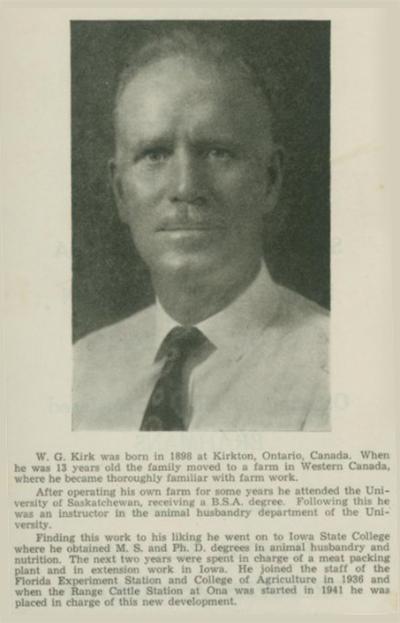
In 1935 President Roosevelt asked each county in the 48 states to make a survey of it's agricultural conditions. The same year because of this directive the Planning Board of Hardee County consisting of the Board of County Commissioners, Farm Security Administration, Extension Service, School Board and interested citizens first met in the Vocational Agricultural Building, Sunset Park, Wauchula, to plan for the improvement of agriculture in the county. A survey showed that 95 percent of Hardee County was used for beef production, that only a limited area had been planted to improved grasses and, as one member said, good or purebred bulls were "a curiosity". The planning centered around way and means of developing the cattle industry since it appeared to be the most important.
A "model farm" was suggested but lack of funds for operation was too great an obstacle to overcome. After many discussions it was decided to request the State Legislature to approve the establishment of a Branch Station of the Agricultural Experiment Station that would not only be of benefit to Hardee County but to all central and south Florida. Later, the Hardee Cattle Cattlemen's Association accepted this as a project and worked vigorously towards its successful fulfillment.

Wives of station staff provide lunch for visitors to the centerThree people, C. D. Ivey, County Commissioner and farmer, Limestone; W. C. King, cattleman and businessman, Zolfo Springs; and H. L. Miller, County Agent, Wauchula; deserve recognition for their untiring work in the early stages of this project. Many local people and others outside Hardee County assisted whole-heartedly in the numerous legislative and planning details necessary in realizing this objective.
Committees of dedicated people from Hardee County made several trips to Gainesville from 1937 to 1939 to obtain approval for the proposed development from Dr. J. J. Tigert, president of the University of Florida and Dr. Wilmon Newell, director, Florida Agricultural Experiment Station. Dr. A. L. Shealy, head, Animal Husbandry Department, recognized the value of a grass-livestock program for central Florida and was instrumental in helping to formulate plans for the type of work which might be undertaken in the proposed project.
-
Available Land
Available Land
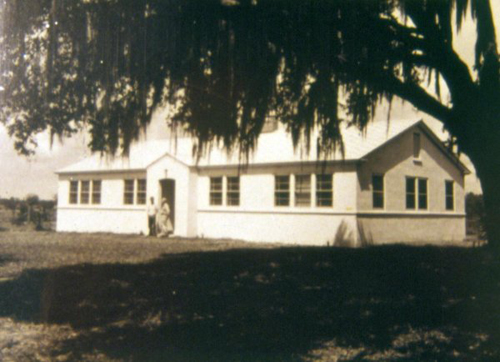
The next step was to secure an option on sufficient range land. An area of 3,000 acres was selected after search of the records and inspection of available land by a committee from Hardee County and representatives from the Agricultural Experiment Station, Gainesville. A survey showed that the cut-over pineland, with numerous pond and prairie areas was a typical sample of millions of acres in central and south Florida.
Much of the proposed area had been sold during the 1915 boom in 10, 20 and 40-acre tracts to people throughout the U.S.A. In the late 1920s when the land boom broke most of the Station area was returned to the county because of unpaid taxes. Hardee Farms and Ranch Inc., Wauchula, redeemed the tax certificates and later sold a large part of the land to the Station Trustees at $2.25 per acre. Funds for the purchase of this land were obtained through private donation and grants from the Hardee Board of County Commissioners.
-
Legislative Action
Legislative Action
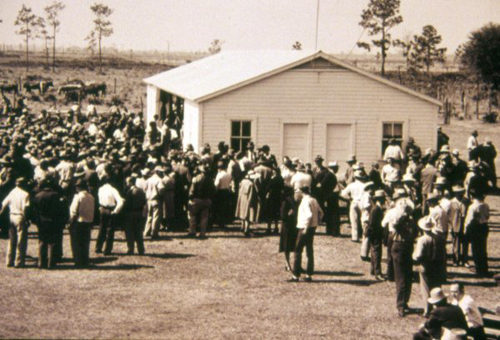
Crowd gathered around field building at early RCREC field dayEarly in 1937, negotiations had reached a point where legislative action was necessary to authorize the project as a unit of the Florida Agricultural Experiment Station system and to provide funds for its operation. The Hardee County Cattlemen's legislative committee prepared a bill and had it presented to the 1937 State Legislature. Approval was obtained for the establishment of a Branch Station, but no funds appropriated for its operation.
Two years later, the State Legislature appropriated $25,000 for the biennium beginning July 1, 1939. These funds were to build, equip and operate a Range Cattle Experiment Station. The State Budget Commission released only $16,000 of this amount since the transfer of deeds by the Board of County Commissioners to the State Board of Education for the first 1,000 acres were not accepted until November 1940. Later deeds for the 1,645 acres were accepted. An additional 195 acres were purchased from receipts of sale of cattle and last 10 acres were obtained in 1960. The total of 2,840 acres is in one block with head quarters in the center of the area.
-
Improvements
Improvements
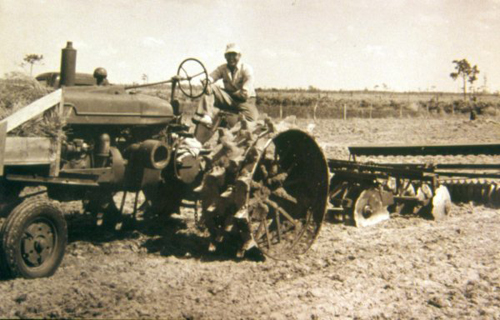
Planting torpedo in April 1948The first improvements were started on January 12, 1941, with the cooperation of the Federal Works Progress Administration. This work consisted in clearing an entrance road and building sites. The project was closed on June 28, 1941, when one-seventh completed, and all available labor taken for the construction of the air field at Avon Park.
By September, 1941, the Station herd consisted of grade cows obtained from the Main Station, Gainesville, the Everglades Station, Belle Glade, and 25 calves purchased from Stuart Brothers, Bartow. Electric power was provided in 1946, an all weather road in 1952 and phone service in 1954.
Results of the research program have been presented at Field Days, through publications of bulletins, scientific papers, talks and articles in magazines and newspapers. A large number of people from Florida and other states and foreign countries have visited the Range Station, the exchange of experiences assisting in the development of the livestock program.
-
Future Opportunities
Future Opportunities
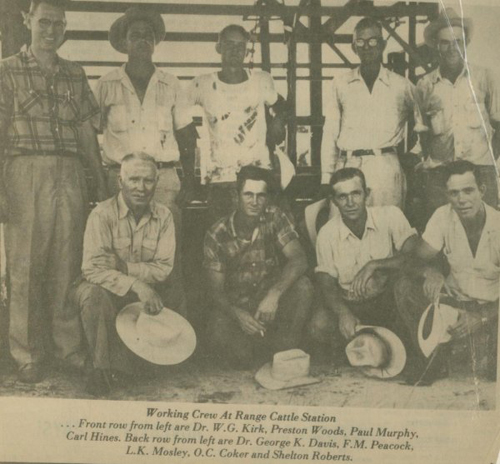
Many changes have taken place in the beef cattle industry of central Florida since 1941. At that time most of the land adjacent to the Station was open range with small areas fenced for vegetable production and citrus. Currently a large area of central Florida has been planted to citrus with a yearly increase in production of fruit. Vegetable growing and pasture improvement are closely associated on many farms and ranches. There are millions of acres of land in central and south Florida yet to be improved.
The research program of the past 25 years has gone far toward fulfilling the purposes for which the Station was established; 1) production of quality forage; 2) improvement in feeding, breeding and management of beef herds. In the years ahead, however, there will be a greater challenge to produce more and higher quality beef for the ever increasing population. According to the DARE Report of 1964, Florida, in 1963 produced 38.6 percent of the beef consumed within the state but only 20 percent of the beef graded Standard or higher. It is estimated that by 1975 the State will produce 700 million pounds of beef and that this will supply 41.9 percent of the need and 20 percent of the higher quality beef consumed. This indicates that there are still more opportunities for improving beef production in Florida.
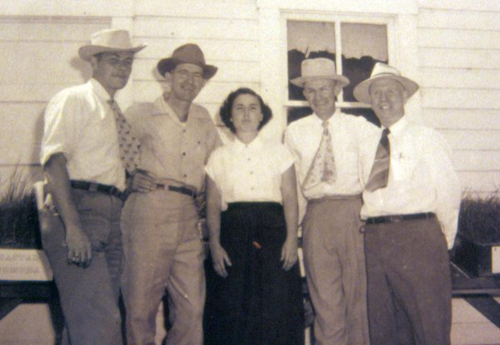
Members of the RCREC staff in April 1952. (Left to Right): Don P. Lee, Dr. E.M. Hodges, Mrs. Betty Gause, D.W. Jones, Dr. W.G. Kirk
Purpose of RCREC
The Range Cattle Experiment Station was established in 1941 for two purposes:
- to learn how to produce quality forage on the sandy cut-over pinelands
- to investigate breeding, feeding, and management of beef cattle
Photo Galleries
Past Events
- Cattle and Forage Field Day (RCREC - 2001)
- RCREC booth at Peace River Electric Cooperative's 61st Annual Meeting (Wauchula - 2001)

